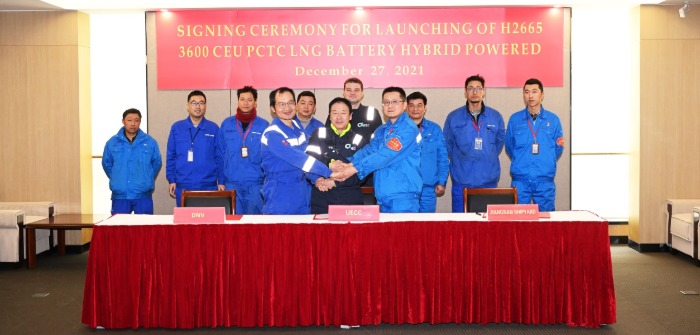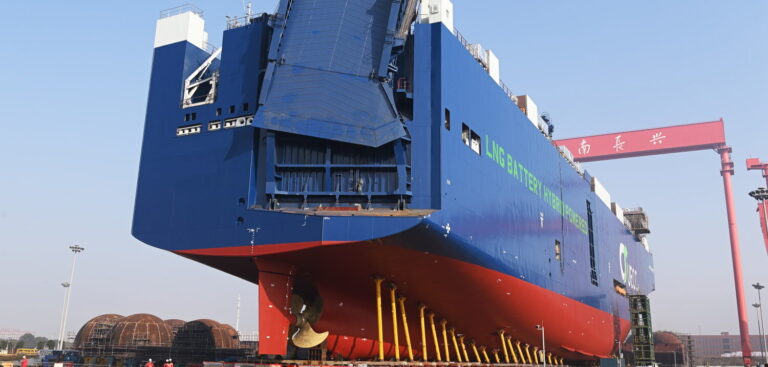Short sea transportation company United European Car Carriers (UECC) has announced the launch of a third dual-fuel LNG battery-hybrid pure car and truck carrier (PCTC). The vessel is the final new-build of the series, and was built at the Jiangnan Shipyard in China.
By utilizing battery-hybrid technology and dual-fuel engines, the new-builds are set to exceed the International Maritime Organization’s (IMO) goal of cutting carbon intensity by 40% by 2030 compared with 2008 levels. Through the use of LNG as a fuel, the vessel’s carbon dioxide levels will be reduced by approximately 25%, particulate matter and SOx by 90% and NOx by 85%. The company’s new-builds will also meet the IMO’s Tier 3 NOx emissions limitations for the North Sea and Baltic Sea.
Additionally, UECC conducted tests on its PCTC Autosky which utilized low-carbon fuels over a one-year period, resulting in a 58% reduction in carbon intensity. UECC plans to extend the use of such fuels to other vessels based on possible trial cargoes.
Upon completion of the new-builds, UECC will have 80% of its total lifting capacity meeting or exceeding the IMO target already this year. The shipping company aims to achieve an annual cut of 34,500 metric tons in CO2 emissions by 2025, compared with 18,700 metric tons in 2020 and 277 metric tons in 2016.
“We are rapidly building up our low-emission fleet to become the leading eco-friendly shortsea carrier in Europe through the addition of these new-builds that will, alongside the use of alternative fuels on our existing vessels, drastically reduce UECC’s environmental footprint,” commented Glenn Edvardsen, chief executive, UECC.
Following the recent delivery of UECC’s first new-build, Auto Advance, the second and third vessels are expected to be delivered in the first half of 2022. When final delivery of the three vessels is complete, UECC’s fleet of nine will include five eco-friendly PCTCs.
“We are taking advantage of available dual-fuel and hybrid technology with these new-builds while proactively adopting existing low-carbon fuels on our operational vessels to make a difference for the environment right now,” concluded Edvardsen.




